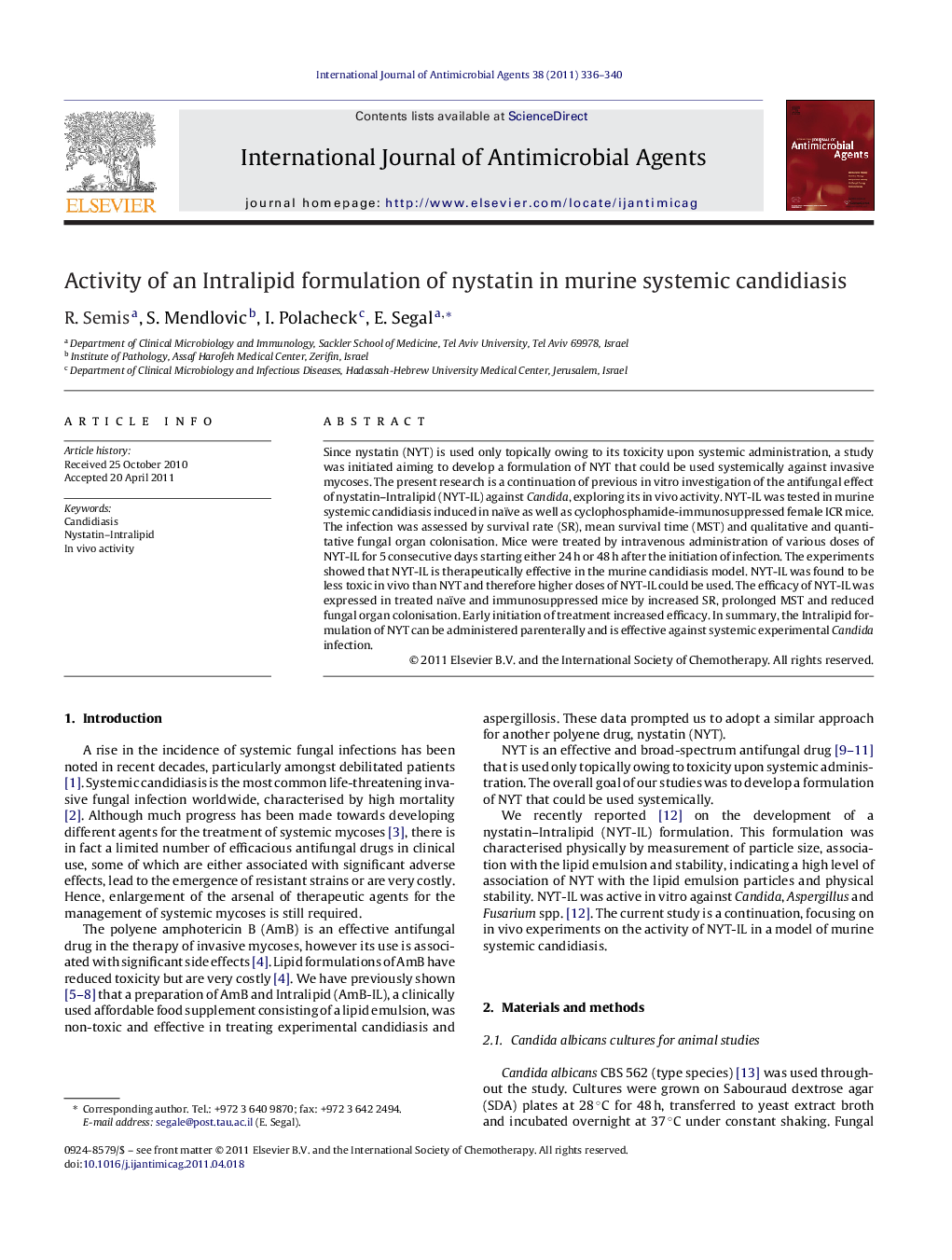| Article ID | Journal | Published Year | Pages | File Type |
|---|---|---|---|---|
| 6118298 | International Journal of Antimicrobial Agents | 2011 | 5 Pages |
Abstract
Since nystatin (NYT) is used only topically owing to its toxicity upon systemic administration, a study was initiated aiming to develop a formulation of NYT that could be used systemically against invasive mycoses. The present research is a continuation of previous in vitro investigation of the antifungal effect of nystatin-Intralipid (NYT-IL) against Candida, exploring its in vivo activity. NYT-IL was tested in murine systemic candidiasis induced in naïve as well as cyclophosphamide-immunosuppressed female ICR mice. The infection was assessed by survival rate (SR), mean survival time (MST) and qualitative and quantitative fungal organ colonisation. Mice were treated by intravenous administration of various doses of NYT-IL for 5 consecutive days starting either 24Â h or 48Â h after the initiation of infection. The experiments showed that NYT-IL is therapeutically effective in the murine candidiasis model. NYT-IL was found to be less toxic in vivo than NYT and therefore higher doses of NYT-IL could be used. The efficacy of NYT-IL was expressed in treated naïve and immunosuppressed mice by increased SR, prolonged MST and reduced fungal organ colonisation. Early initiation of treatment increased efficacy. In summary, the Intralipid formulation of NYT can be administered parenterally and is effective against systemic experimental Candida infection.
Keywords
Related Topics
Life Sciences
Immunology and Microbiology
Applied Microbiology and Biotechnology
Authors
R. Semis, S. Mendlovic, I. Polacheck, E. Segal,
